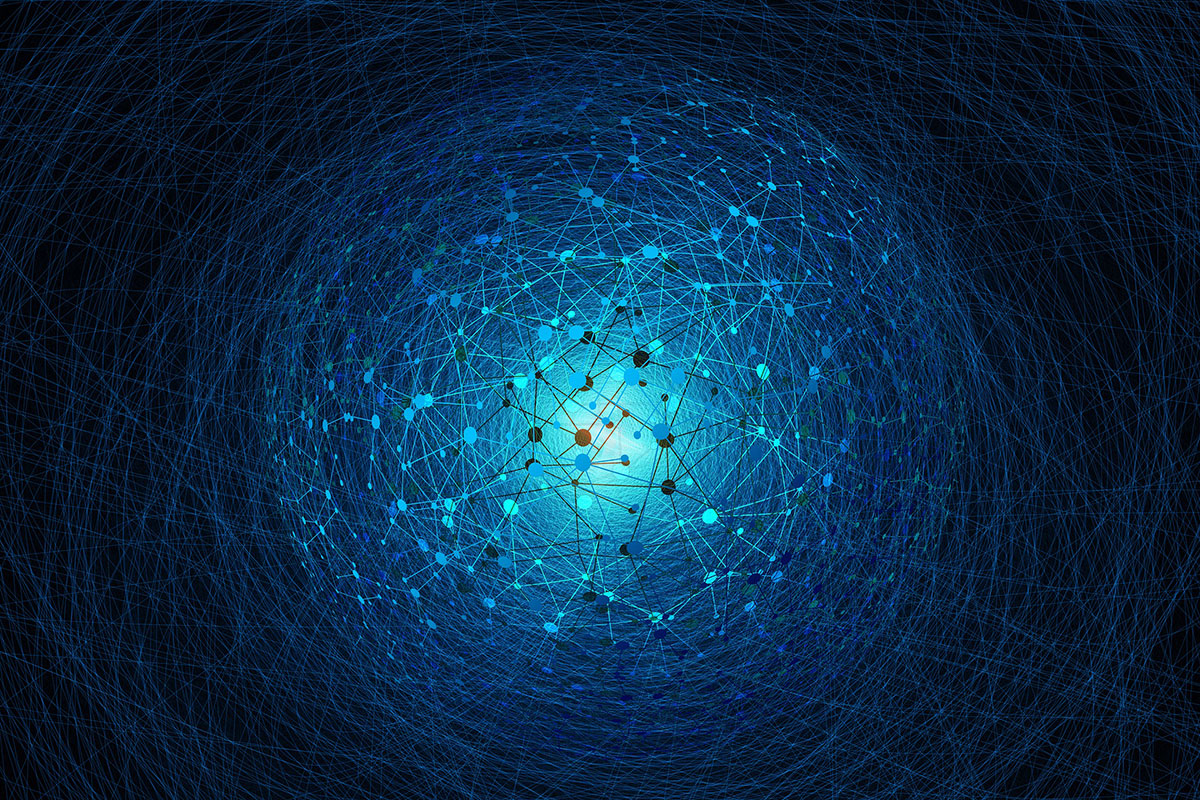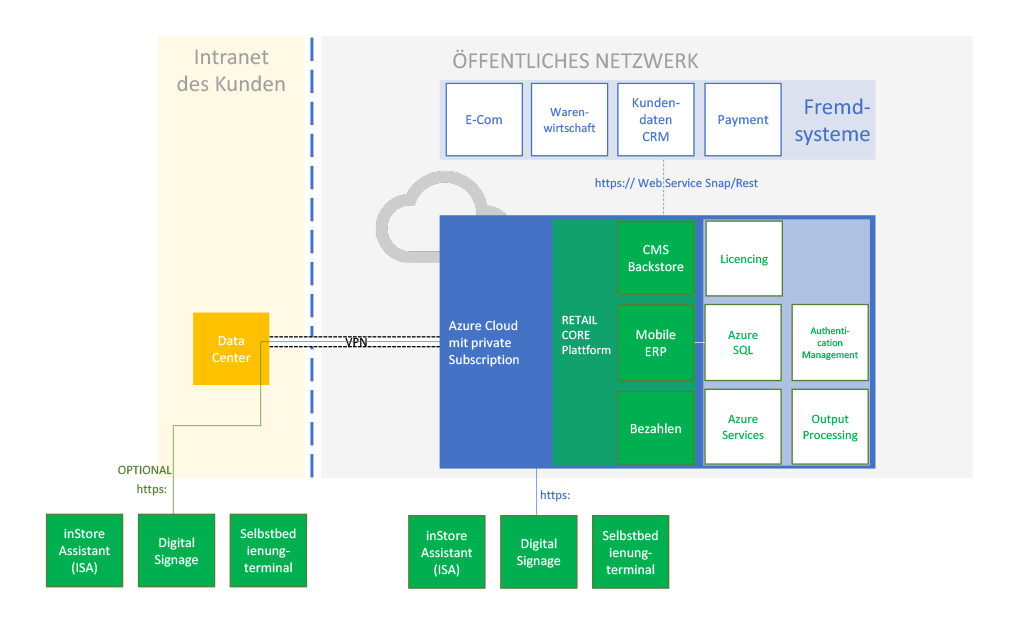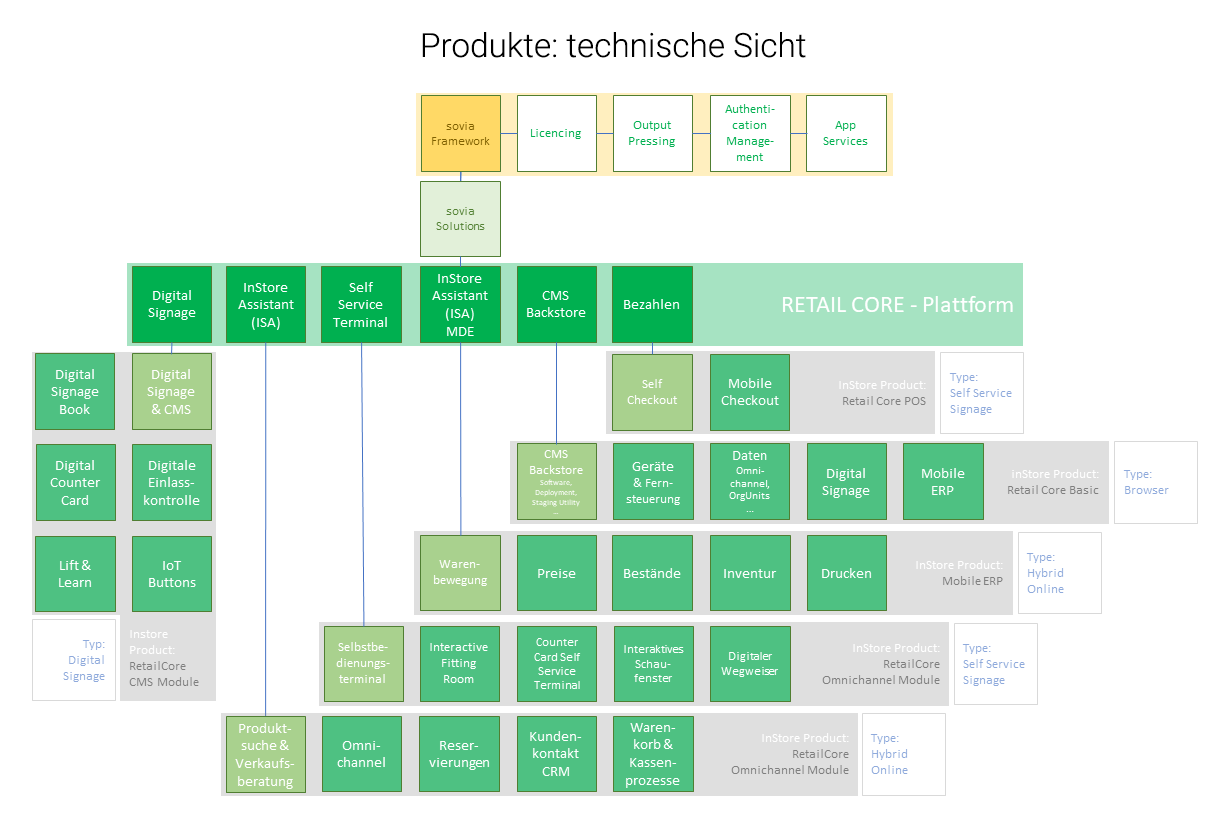
... or what a Tom Hanks film has to do with digital signage
Where systems meet
Do you remember the movie Cloud Atlas from 2012? The film's tagline was 'Everything is Connected', meaning a philosophical, epoch-spanning connection between people, music and belief.
It's not that esoteric with us, but the tagline “Everything is connected” still fits like a fist when it comes to the core of our solutions.
We're calling this core sovia Framework.
The framework is an Azure cloud based platform on which we develop and host our applications. This means that we not only use reliable Microsoft technology as a basis, but can also scale at any time thanks to the cloud.

Within the framework, the soviaRetail CORE platform acts as the "meeting point of the systems". We use this to link our customers' applications with our own. Customer data can, for example, flow in from ERP systems, PIMs, DAMs, but also consist of data that is obtained directly in the store (for example when a new customer card is created). Information from eCommerce can also be accessed and implemented.
It does not matter which software is used by the customer to collect retail data. Our soviaRetail platform has been developed from scratch and is therefore extremely flexible in terms of connection. Building interfaces to any third-party software is no problem.
Why do we need this interface? - Answer: because it is raining
Fed with the data that flow together in the soviaRetail CORE, we can now bring the sovia Solutions to life. By this we mean all applications that are available to our customers and for whose operation we have built those interfaces.
These are:
Any kind of digital signage application
The InStore Assistant including all mobile ERP applications
Self Service Terminals
The Backstore (CMS)
Payment solutions and omnichannel processes

The advantage of this is that changes only have to be made at a single point in the customer's system - our soviaRetail system immediately picks up what has been changed by the customer. This can be for example:
Prices (per article, per assortment)
Stock data (in the branch, in the warehouse, in the online shop, etc.)
Movement data (Click & Collect packages, deliveries from the central warehouse from/to branches, etc.)
Promotion goods (SALE/red pen prices, new arrivals, etc.)
The "simplest" conceivable use case is that the price changes in the item detail page (InStore Assistant) or on the item template (digital signage display). But more complex, often rule-based relationships can also be mapped. For example, articles are only displayed (on digital signage screens or self-service terminals) when the inventory changes up or down, the price falls, or even falls below a certain temperature at the POS. The weather can also determine whether an article should come to the fore or not. After all, which argument to increase the sales of umbrellas, rubber boots and rain ponchos is more powerful than “because it's raining right now”?
A glance at the future
But a stable interface also makes things easier when it comes to communicating with employees in the store. Thanks to the InStore Assistant (our app designed especially for staff in the shop), changes that require the intervention of staff are automatically forwarded as a push message to the mobile devices of the stores concerned. In this case, this means that if a price adjustment is carried out centrally and certain items in the store need a corresponding new labeling, the ISA will contact all those employees who have to carry out the price labeling with precise instructions.
Even future tasks can be announced ike this with one click in the soviaRetail Backstore .
In addition to the price labeling, these can include:
Notifications for stocktaking
Packing Click & Collect packages
Picking (e.g. for Click & Reserve take-aways or gift boxes)
Redesign of the shop window or goods carriers
Notification of goods that will be delivered to the store
Storage of seasonal goods
At the same time, tasks completed in the stores are fed back to the mERP module of the backstore, where they can then be viewed by the regional manager.

No screen is an island
Today, neither digital signage nor mobile ERP processes should be isolated island applications. Especially the interaction of all digital applications - from simple screen video to complex omnichannel processes - can develop their full potential thanks to the networking of all relevant systems. In times of merging between offline and online, data must be up-to-date down to the millisecond, without having to be manually readjusted at X different points.
Planning in advance and automating processes and rules not only saves one of our greatest assets (namely: time), but also prevents 'human error'. The colleagues in the headquarters as well as on the floor can thus devote themselves to the core of their work: to inspire the customers with their offer.